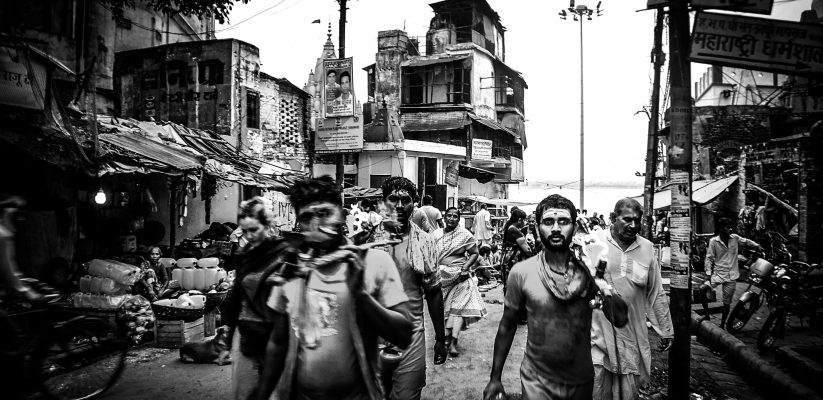Author: Nupur Jaisinghani, Doctoral Researcher, CAMRI, University of Westminster
With April being Dalit History Month globally, we thought now is the perfect time to sit down and write about this often-neglected community and why it is important for the global community to recognize their place in society.
Who are the Dalits?
‘Dalit’ was the term coined by Dr BR Ambedkar (amongst other notable achievements chaired the committee that drafted the Constitution of India) to refer to the Untouchables or Depressed Castes in India, as a means of uplifting and empowering them. The caste system has been enforced in India since Vedic times based on the Rig Veda, an age-old Hindu scripture that talks about the creation of the human race from the primal man Purusha, which also defines the place and role of each individual in society. From his head rose the Brahmin, the caste of the priests who were entitled to read the holy scriptures and perform religious ceremonies; they were considered the highest caste. From the arms of the man, sprang the Kshatriyas, or the warrior tribes who were capable of being kings; from his thighs, the Vaishyas or merchants and traders. And finally, from the feet, came the Shudras, the servants, and labourers, and the Ati Shudras, the Untouchables, who later went onto be called the Dalits – the lowest caste in the hierarchy who were only ever meant to perform degrading menial jobs. Caste is also very much maintained through endogamy, the practice of discouraging marriage between castes, to maintain purity within the castes.
The caste system in India is very similar to racism in the West, and while there is some debate about whether caste and race are really the same, there is plenty of testimony supporting that caste and race are very much the same, and within the Indian context, race lives through caste in a process that can be referred to as racial Indianization. One difference is that caste in India is very fluid in nature, being defined and redefined based on the changing socio-economic climate of the country. The dominant discourse of India favours the upper caste over the lower caste, much like how social and political practices in the West favour Caucasians over other minorities
In a country like India, social status is just as important as economic status, and while affirmative action and reservation policies try for inclusion of the Dalit community in the workforce, they are not accepted into the social sphere as equals to the upper caste community. Reservation, in fact, makes them more identifiable as a ‘lower caste’ which in turn leads to the Dalit community being further confined to the bounds of their caste.
The Dalit situation in modern India is no better than it was when Dr BR Ambedkar drafted the Indian constitution. As per the National Crime Records Bureau reports, in 2020, amidst the COVID-19 global pandemic, crime against Scheduled Castes saw a total of 50,291 cases being officially registered with an increase in crime rate from 22.8 in 2019 to 25.0 in 2020.
Gender within caste
The different forms of patriarchy that exist in India today are influenced by brahmanical patriarchy, which was a term coined by Dr. B.R. Ambedkar. It explains the subjugation of women based on a hierarchical society that is organised based on caste. It is a form of society that is extremely niche and unique to India. Men have been placed above women, whether it be inside or outside the home. But what happens when the basis of discrimination is not gender alone? What happens when caste is included as an underlying cause of oppression? The nature of mainstream Indian feminism, which focuses mostly on the problems faced by the upper caste Hindu women and leaves the Dalit women (or women from other minorities) out of the conversation is not equipped to answer these questions. Dalit women then become a subaltern within a subaltern; a minority within a minority.
Why do we need Dalit History Month?
Inspired by the Black History Month of the West, Dalit History Month is celebrated every April since 2015 in an attempt to reassert agency of a community that has been oppressed by bringing forward their stories of resistance and resilience. Actively educating oneself on the issues faced by the Dalit community is only the start, and a small start at that, in trying to bring about any true sense of equality in society. Dalit history is the alternative history to the dominant discourse of Indian society, and it is now more important than ever to ensure that the voice of this community is being heard loud and clear. So, this April, in the spirit of inclusion, we can all do our part to raise awareness and educate ourselves about the issues faced by the Dalit community.
- Obesity as a genotoxic environment - April 28, 2023
- Dalit History Month and its significance - April 20, 2023
- A professor is going to live in an underwater hotel for 100 days – here’s what it might do to his body - April 13, 2023

hello sir ji humko Dalit history ke bare mein batwo kuch important sabd batwo
tippanee ke lie dhanyavaad! (forgive the auto-translate, I hope that reads correctly!)